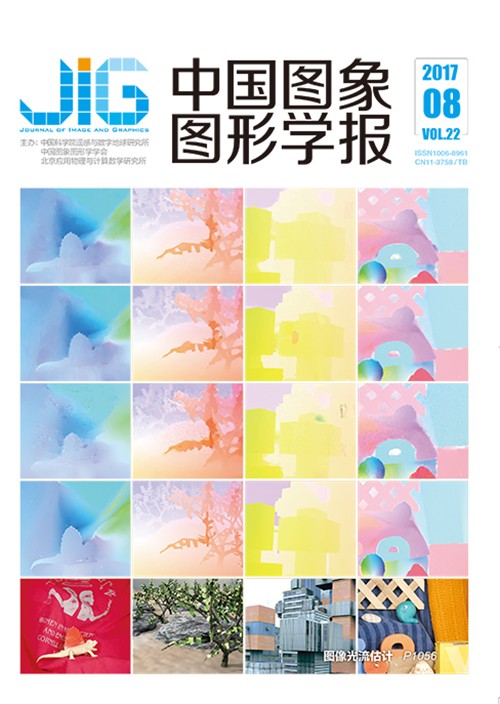
相关滤波目标跟踪进展综述
摘 要
目的 目标跟踪是计算机视觉中的关键问题,在人机交互、行为识别等领域有着非常广泛的应用。最近,相关滤波理论由于其高效性和鲁棒性,被用于目标跟踪领域,取得了一系列新的进展,成为目标跟踪领域的研究热点,得到越来越多的关注。为使更多国内外研究者对相关滤波目标跟踪理论及其发展进行探索,本文对该领域研究现状进行综述。方法 首先介绍相关滤波跟踪的一般框架,在此基础上,给出相关滤波理论,并重点对经典相关滤波跟踪算法——核相关滤波(KCF)跟踪算法进行详细描述,然后讨论目标跟踪中常见问题的处理——特征的有效表示和尺度变化的适应,并进一步从3个方面分析当前研究现状,指出未来可能的发展趋势。结果 采用目标跟踪基准数据库(OTB-2013)中的50组视频序列进行实验,分析比较45种不同跟踪算法的性能,包括14种代表性相关滤波跟踪算法。在总体性能评估中给出排名前15位的跟踪算法,其中相关滤波跟踪算法占11个,充分体现此类算法的优越性。结论 相关滤波理论在目标跟踪领域的研究取得了显著的进展,具有广阔的应用前景,但受复杂场景及目标外观剧烈变化等因素影响,目标跟踪仍是一个极具挑战的问题。研究高效、鲁棒的相关滤波目标跟踪算法具有非常重要的意义。
关键词
Recent advances in correlation filter-based object tracking:a review
Zhang Wei, Kang Baosheng(Department of Information Science and Technology, Northwest University, Xi'an 710127, China) Abstract
Objective Visual object tracking is a key problem in computer vision area.It has a wide range of applications in the field of human-computer interaction, behavior recognition, robotics, and surveillance.Recently, visual object tracking has been widely applied to object tracking field due to its efficiency and robustness of correlation filter theory.A series of new advances have been introduced and much attention has been achieved.Correlation filter-based tracking methods have become a research interest in this field.These methods have received extremely compelling performance in recent benchmarks and competitions.This paper reviews the current research status of the tracking field to allow more researchers to explore the theory and development of correlation filter-based trackers (CFTs).Method First, the general framework of correlation filter tracking is introduced.The correlation filter theory is presented based on the general framework.Then, the classic CFTs, such as the kernelized correlation tracking, are described in three parts as follows:training, detection, and updating in detail.Furthermore, problems that often occurred in tracking task, such as feature representation and scale variation, are discussed.The scale estimation strategy in CFTs is further divided into four different categories depending on how they handle the scale variation;the categories are scaling pool-based strategy, part or patch-based strategy, keypoint-based strategy, and other methods based on their proposed models.In addition, the current research status is analyzed in three aspects, namely, model-based improvement, part-based tracking, and ensemble-based tracking.Future development trends are also presented in the discussion.Result Fifty video sequences from object tracking benchmark (OTB-2013) dataset have been adopted in the experiments to analyze the performance of 45 state-of-the-art trackers, including 14 representative CFTs.Comparisons are performed for these trackers using average center location error, average Pascal VOC overlap ratio, and median frame per second.Precision and success plots are presented simultaneously to evaluate the overall and attribute-based performances.In the overall performance evaluation, the top 15 trackers are provided, and 11 CFTs are observed, fully reflecting the superiority of these trackers.In the attribute-based evaluation, benchmark sequences are annotated with 11 different attributes, such as scale variation, occlusion, and deformation.Success plots of different attributes are presented, and the performance of CFTs and state-of-the-art trackers is discussed.Experiment results demonstrate that most CFTs not only perform favorably in comparison to the state-of-the art trackers in terms of accuracy and robustness but also satisfy the demand of real-time processing.Conclusion The research on correlation filter theory achieves great improvements;it has extensive applications in the object tracking field.However, actual scenarios are usually complex, and targets often undergo large appearance changes, which easily influence the tracking performance.Object tracking remains a challenging task.Developing highly efficient and robust CFTs is considerably significant.Future studies can be conducted on balancing between the accuracy and efficiency, selecting appropriate features, and exploiting spatial structure of reliable parts.The application of CFTs in multi-object tracking and long-term tracking is also a valuable point.
Keywords
|



 中国图象图形学报 │ 京ICP备05080539号-4 │ 本系统由
中国图象图形学报 │ 京ICP备05080539号-4 │ 本系统由